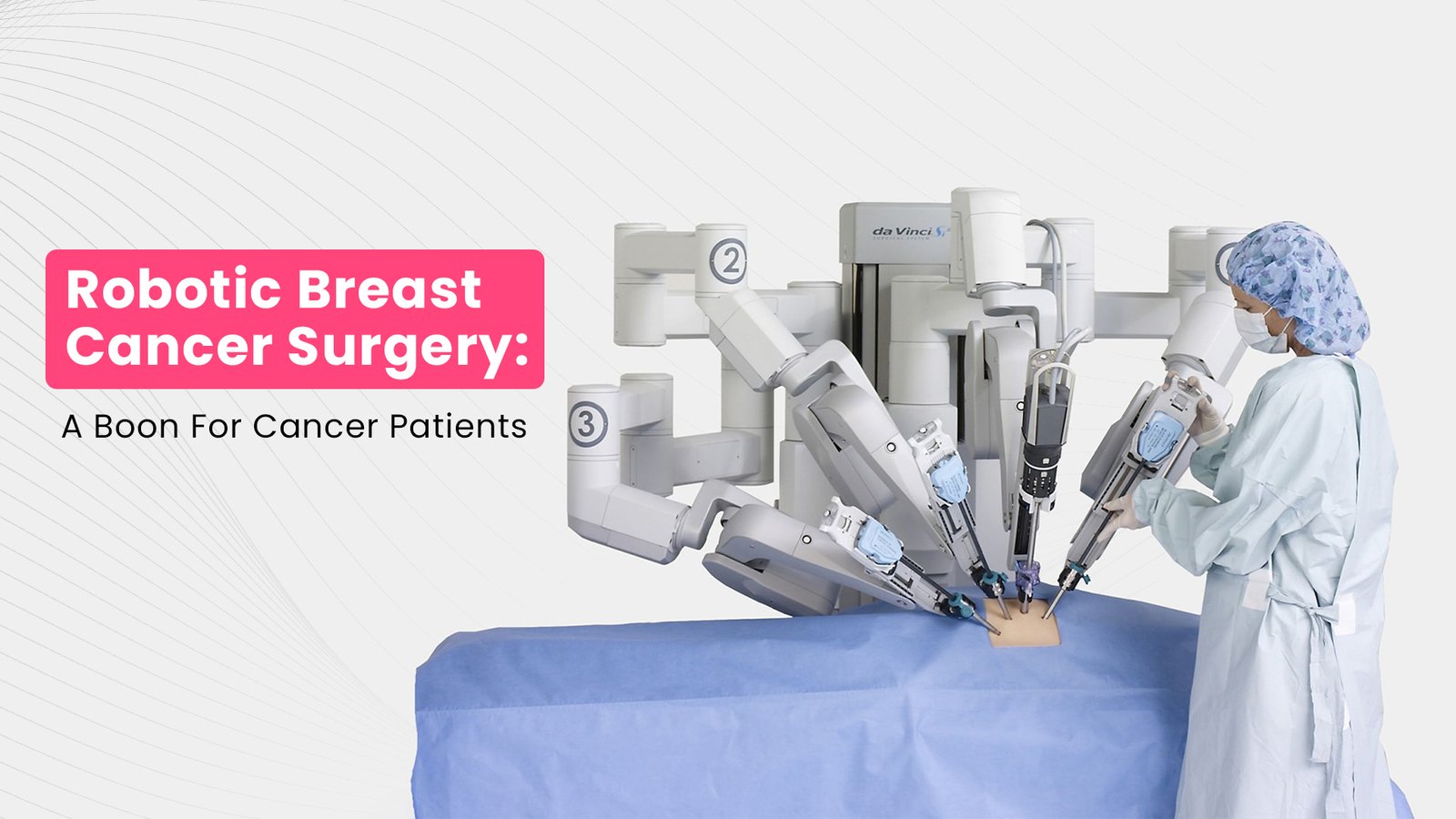
The journey of a breast cancer patient is one of the most delicate, emotional, and, personal experiences in a person's life. For a long period of time, surgery remained the best and most effective way of treating breast cancer.
In today's world, robotic tools are at the forefront of treating surgical procedures. Robotic technology in breast cancer surgery is a remarkable breakthrough in patient care because of the precision, speed, aesthetic recovery benefits, and overall surgical results it offers.
All About Robotic Breast Surgery
In breast cancer’s robotic surgery, an advanced equipment is utilized that allows less invasive approaches — robotic arms are maneuvered by highly skilled surgeons, and they guide the robotic instruments and high-definition 3D cameras through a console to manipulate the arms.
The surgeon is completely in control of all actions, while the robotic arms are indeed performing actions based on the commands given by the surgeon.
This technique provides numerous additional advantages, and it is especially beneficial in terms of movement range in small spatial areas which exceed the potential of the human hand.
Benefits of Robotic Surgery for Treating Breast Cancer
Below are the Benefits of Robotic Surgery for Treating Breast Cancer:-
1. Numerous Medical Advantages
Unlike operated surgical procedures, robotic surgeries are associated with significantly smaller cuts.
2. Natural Aesthetics Preservation
Robotic surgery enables careful dissection of the nipple and skin envelope on both sides for nipple-sparing mastectomy. This is particularly helpful for patients who wish to have immediate reconstruction, as the aesthetic result will be markedly improved.
3. Visualization Improvement
Preservation of important delicate structures like nerves, blood vessels and lymph nodes is possible with the robotic system’s 3D high-definition vision which magnifies the operative field.
4. Improvement of Dexterity
Dissections and complex reconstructions are particularly challenging with regard to dexterity, however, the robotic arms which mimic wrist movements, allows for complete movement and rotation of up to 360°.
5. Less Pain and Rapid Recovery
Due to the minimally invasive nature of the procedure, patients suffer from significantly less postoperative pain, reduced blood loss, fewer complications, and much quicker return to daily activities.
Types of Breast Cancer Surgeries Performed Robotically
The integration of robotic surgery into standard procedures for breast cancer treatment is an evolving process. However, it has been adopted for: -
Nipple-Sparing Mastectomy: Removal of breast tissue is done while the nipple and skin are retained which is cosmetically more appealing with reconstruction.
Lymph Node Dissection: Risks of lymphedema and nerve injury are less with robotic precision, mitigating risk of developing nerve damage.
Reconstructive Procedures: Robotic assistance improves precision in autoregulatory tissue and implant breast reconstructions.
Robotic vs. Traditional Surgery: What’s the Difference?
Feature | Traditional Surgery | Robotic Surgery |
| Incision Size | Larger | Smaller |
| Recovery Time | Longer | Faster |
| Scarring | More visible | Minimal |
| Precision | Surgeon’s hands | Robot-assisted with better control |
| Visualization | 2D or basic 3D vision | Enhanced 3D HD vision |
Who Is a Good Candidate for Robotic Breast Surgery?
Not all breast cancer patients may qualify for robotic surgery. Ideal candidates include:
- Patients diagnosed in the early stages
- Women opting for nipple-sparing mastectomy
- Those seeking improved cosmetic results
- Patients who prefer quicker recovery with less scarring
An oncologist will evaluate the tumor type, location, and overall health to decide if robotic surgery is appropriate.
Breast Cancer Surgery Innovation
Robotic surgery enhances technology’s role in healthcare because its uses extend beyond just an upgrade. It elevates the patient experience, surgical outcomes, and cosmetic results of the operation. While it does not suit every patient, or every case, there is a growing impact in breast cancer treatment for patients in specialty clinics focused on oncoplastic and minimally invasive surgery.
Final Thoughts: A Blend of Care and Careful Strategy
This surgical revolution’s spearhead is none other than Dr. Mansi Chowhan. An expert Oncoplastic Breast Surgeon with over fifteen years of experience, she is known not just for her skills but for each empathic approach she takes toward treatment. A gold medalist during her surgical post-graduation, Dr. Chowhan is well-versed with the intricacies of various types of breast cancer surgeries, some of which are:
- Lumpectomy or Breast-Conserving Surgery
- Mastectomy & Radical Mastectomy
- Nipple-Sparing Mastectomy
- Sentinel Lymph Node Biopsy
She has practiced in some of the most reputed hospitals in Delhi-NCR such as Fortis Healthcare, Artemis Hospital, Paras Hospital and the Asian Institute of Medical Sciences.
What distinguishes Dr. Mansi is her round-the-clock commitment to patients which encompasses treatment, emotional support, and personalized care at every step. Her mastery in robotic and oncoplastic surgery means that her patients not only defeat cancer but also endure it with grace, self-assurance, and optimism.











